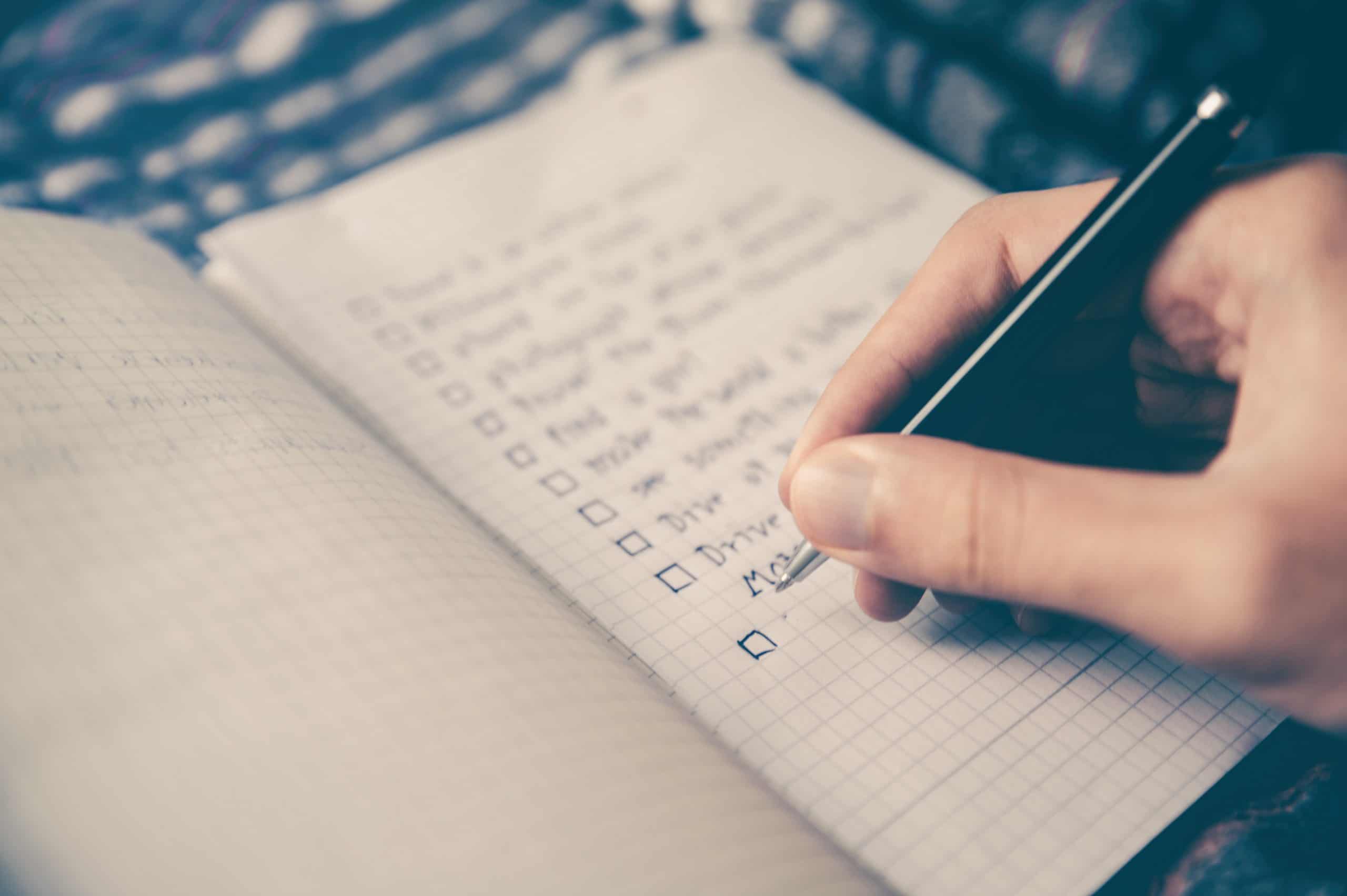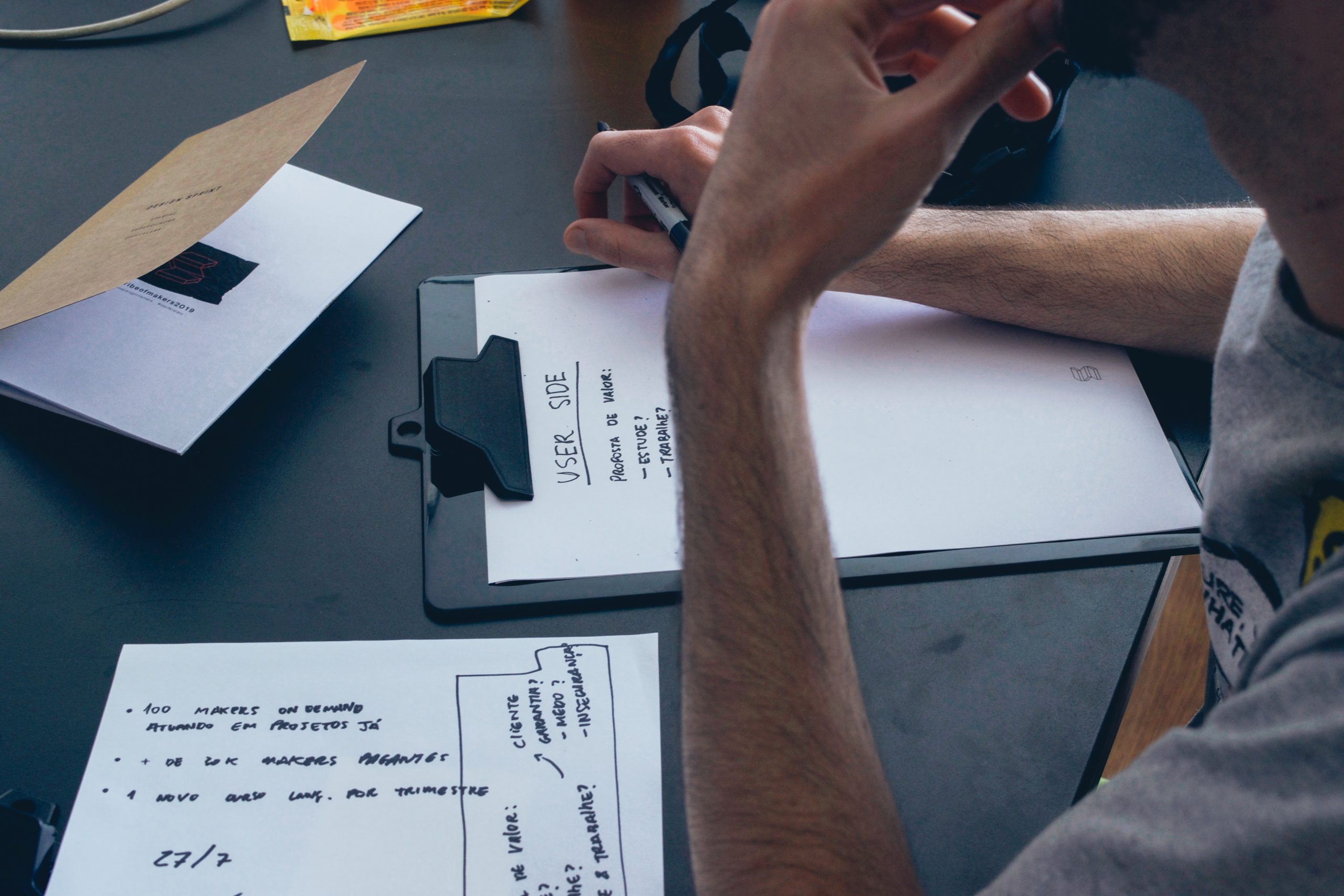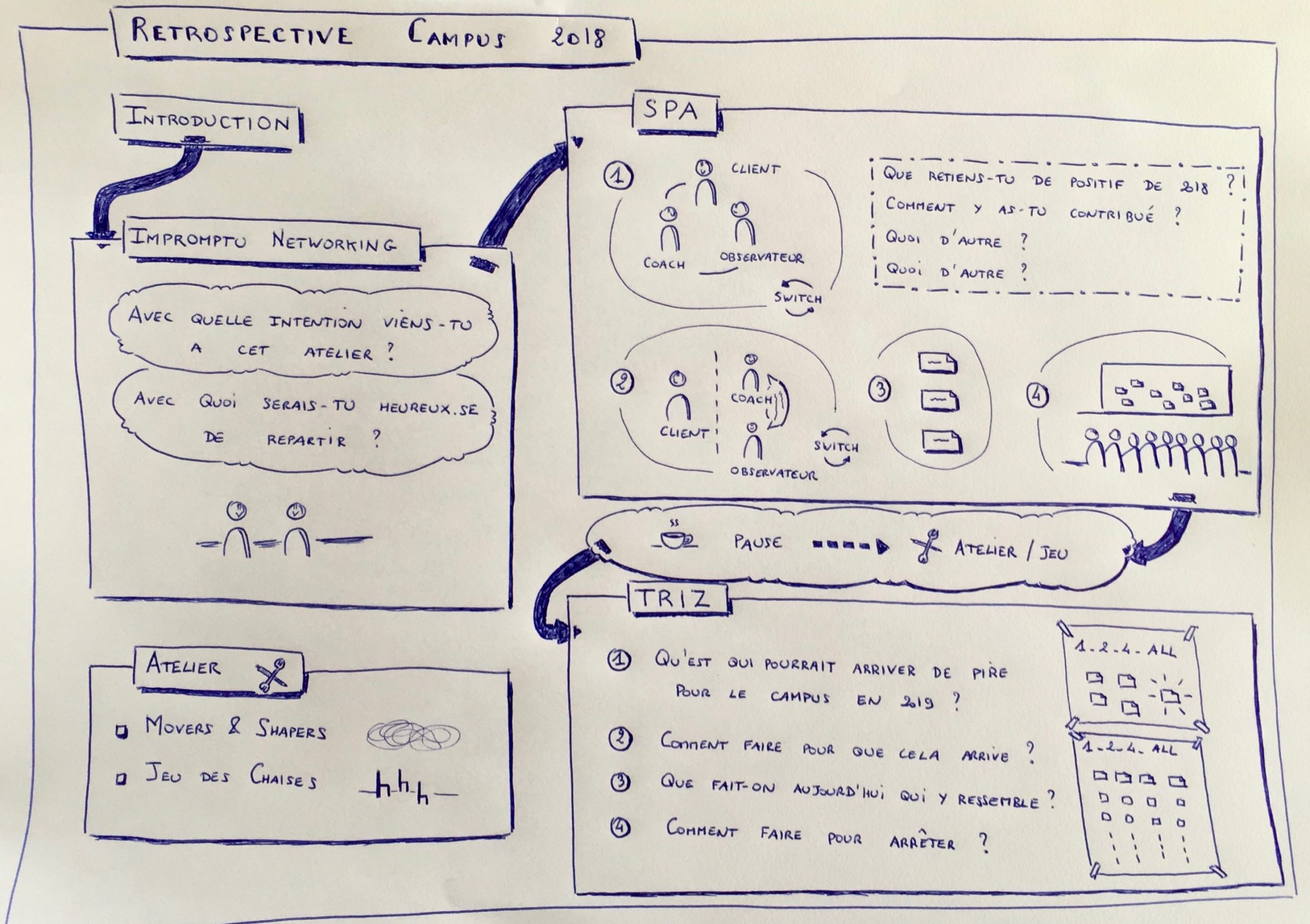
2 years ago, in December 2016, I hosted the team's annual retrospective, which I subsequently accompanied with the Agile Rocket Cooperate module. It was a moment of exchanges and sharing that I had built around a Consensus Workshop and a step Appreciative Inquiry so that you can celebrate successes and go on vacation with peace of mind.
This year, I am again asked to intervene in the same context. However, I realize that it is not always easy to innovate over time and that after spending more than a year with a team, there have been activities and workshops that I do not I don't even really know which ones have already been done or not! 🙄
We talk a lot about Liberating Structures lately as engaging facilitation formats, I thought this would be a good opportunity to experiment with them as well as share them with the group for their own future use.
I will describe in this article the Design part of this annual retrospective which will take place at the beginning of 2019.
Context of the request

- The retrospective will take place early January due to Calendar constraints
- However, the intention remains the same: to carry out a close of 2018 and an opening on 2019
- The time allotted to me is 9:30 a.m. to 12:30 p.m. max
- The group will consist of approximately 40 people
- There is still a doubt about the space that will be available
- All the people making up the team are invited: apprentices, trainees included
- This time is also seen as an opportunity to Team Building and strengthen the group
- The ideas of Celebration and of Pride used the previous time were well appreciated
- The teams have changed since my intervention, there are few instances of collaboration between them
- There is an impression of a too many offers, which makes communication difficult and the whole fuzzy
| Note / Reminder: the activity of this team is the provision of training for all employees of their company. |
Design: the frame

Timing
|
- An introduction of about 5 minutes,
- A closing of ten minutes,
- A break in the middle of about fifteen minutes.
Number of persons
|
- Go on activities in subgroups
- benefits :
- management of smaller groups at the same time
- more engaging team dynamics
- self-regulation within the subgroup
- constraints :
- potentially requires common sharing time
- attention distributed to each group
- benefits :
- Go on full group activities
- benefits :
- attention focused on the group, the complete system
- self-regulation of the group on the instructions
- constraints :
- heterogeneous commitment of people, drowned in the group
- management of multiple discussions within the group
- benefits :
| Note: these lists are not intended to be exhaustive, now they appear to me as a sufficient starting point. |
Intention
|
- Retrospective 2018 : It is therefore necessary to keep a part allowing to value the work which was carried out throughout the previous year.
- Outlook 2019 : to be able to take the next step, rather than looking at what more we could do, I tend to suggest the opposite, what we could stop doing in order to move towards more simplicity ( hey, wouldn't that be an Agile principle? 😛 ). The intention here would therefore be to move forward with a freer and lighter step rather than dragging along the imponderables of the past.
Design: content

|
The Spa
During a training day in graphic facilitation with Aurelien Morvant and Laurent Sarrazin, I had the opportunity to discover the SPA which appeared to me as a particularly interesting activity. Indeed, at first the participants work in threes, each having a specific role:- A coach (A): who will ask a series of questions and only these questions
- A client (B): who will answer the questions
- An observer (C): who will listen to the discussion
- What do you take away from this year 2018?
- How did you contribute to it?
- What else ?
- What else ?
They will then switch roles so that everyone has the opportunity to experience each role.
In a second step, one of the people (B for example) will position himself with his back to the 2 others as if he were listening to a conversation of these 2, about him. The 2 other people (A and C) are going to express what they were able to retain of the positive answers of (B), which could mark them as much on the level of the words as of the bodily expressions.
It is then a generally pleasant moment for the person who receives this feedback, which warms the heart: the SPA is therefore aptly named! 😛
However, keeping in mind the nevertheless collective dimension of this part, I had to add a sequence of sharing in a complete group to allow a global celebration of the participants.
I then think of having each trio select the 3 main ideas they have retained from their exchanges and we will display them to the whole group as a word cloud.
|
Impromptu Networking
- To trigger the immediate participation of participants
- To help shy people open up and get started
The idea would be to propose 2 questions to condition the participants:
- Why are you coming to this workshop?
- What would you be happy to leave with?
| Note: the questions are subject to change, let's say these are the initial proposals 😛 |
TRIZ
- To allow the unspeakable to be expressed and to take the corpses out of the cupboards
- Make room for innovation
- Lay the groundwork for creative destruction by doing the hard work the fun way
It is interesting to see that one of the first examples given for this activity is through the following question:
I think the choice was therefore quite quick to make! 😉 The animation structure is based on a sequence of questions that the group will answer using the 1-2-4-All. The questions I have chosen so far are:What should we stop doing to make progress on our deepest purpose?
- What could be worse for you in 2019?
- How to make this happen?
- What are you doing today that looks like it?
- How to stop?
| Note: this version goes slightly further than what I had been able to do in my Kick-Off structure, although the idea is essentially the same. |
1-2-4-All
- To involve each person in the search for answers
- To create spaces where participants can express themselves without fear and reduce hierarchical and power differences
- To enrich the quality of observations and ideas before they are expressed
- To naturally lead to consensus or shared understanding
Post Break Energizer
Finally, I wanted to give some movement after the break, keeping in mind this idea of Team Building. So 2 options came to mind, thinking about activities that I probably hadn't done with this group yet:- Movers and Shapers: to show the impact of an element on an overall group dynamic
- The game of chairs: to show the importance of transparency of objectives for cooperation between people
Proposal

Here is the proposal that I sent in order to have a first feedback from the applicants. We were able to discuss the different parts and this could give them a first idea of what could happen during this session. I was able to obtain some additional information concerning the place and other constraints, which enabled us to make certain structuring choices for the animation.
As mentioned earlier in the article, we have been quite successful in combining sub-group and full-group activities which should allow for movement and engagement at different levels.Conclusion

Here is an additional article on workshop design that I found interesting to share. I hope that the reflection process can be useful to you for your own workshop designs even if it is quite obvious that it is only one way of doing things, at least my way of doing things 🙂
I will probably write a future article on the progress of this retrospective with my feedback on this first test of Liberating Structures in the field!
With that, I leave you with this last article of the year 2018 and wish you an excellent holiday season!
See you next year 😉







6 responses
HELLO OLIVIER
DURING THESE TRUCES AS INDICATED YESTERDAY I DISCOVER YOUR TICKETS AND I FIND THE FRAMEWORK of your events VERY RELEVANT;
I know the game of chairs not that of Movers and Shapers what is it exactly
I wish you a happy new year
Thierry
Hello Terry,
Thank you for your message !
May I refer you to the following article: https://oyomy.fr/2018/12/strategie-et-dynamiques-dequipe/
You will find descriptions of Movers and Shapers among a few other activities.
Wishing you happy holidays too!
Olivier
Thank you again for these very inspiring shares! Very well designed workshops, congratulations!
Thank you for your message ! Glad it could be useful 🙂
Hello Oliver,
Thank you for sharing this article which I find very interesting. The design you propose is really fluid and dynamic. I have to animate a global assessment of the year 2019 of the project on which I intervene as Scrum master. The participants will be the scrum team and the sponsors + some support actors of the DSI (about 23 people). Do you think that the SPA workshop can also apply to sponsors?
Janet
Hello Janet,
Thank you for your message !
I think the SPA workshop can apply to anyone, it all depends on your intention in reality! For Sponsors, this can be interesting in the sense that their point of view is different from what the teams have been able to experience while they have probably also contributed at their level!
I would say that the SPA seems to me to be a good sequence to start your session, then perhaps follow up with a Timeline-type exercise. I did this recently precisely to carry out a review in a team and it worked rather well!
Hoping to have been able to answer your question, I wish you a beautiful day!
Olivier